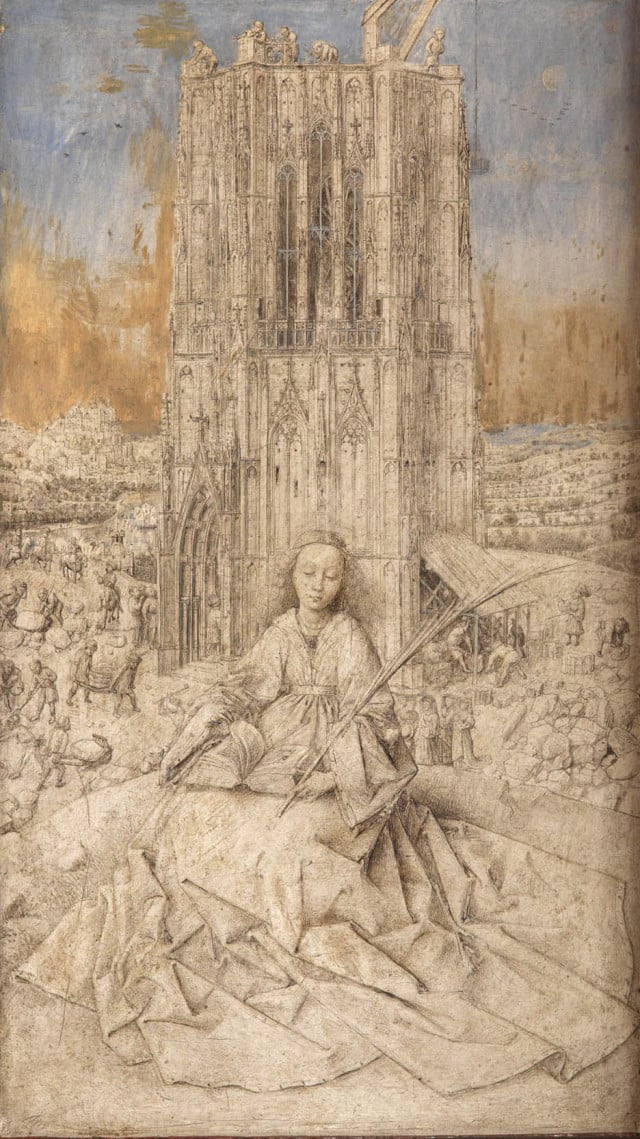
THE DAILY PIC (#1556): One of the biggest surprises of the “Unfinished” show in the Metropolitan Museum of Art’s new Breuer outpost is just how many of its works can’t definitively be said to be finished or not. Indeterminacy, which seems such a hallmark of radical modern art, seems to be lodged at the heart of all picture making, as the great art historian Ernst Gombrich liked to point out.
This 1437 brush drawing of Saint Barbara, by the great Flemish master Jan van Eyck, seems at first to be the kind of black-and-white underpainting you’d expect an artist to put down as a guide to colored paint that would go overtop. But the way the piece is framed, not to mention the extreme care that Eyck took in rendering the details in his image, makes some scholars think that it was always intended to look the way it does now.
An art-historian friend who studied the piece with me at the Met pointed out one detail that I think may lead us to a solution to the problem. As my friend noticed, the tower behind the saint is itself depicted in the process of being completed, since van Eyck has included workmen carving its stones on the ground and a block-and-tackle lifting them to its top.
The picture, that is, seems to be meant as a finished work that is all about – is almost an allegory for – the incomplete. And what better way for the brilliant van Eyck to convey that content than by giving his finished work itself some carefully considered aspects of unfinished-ness. Put another way, van Eyck’s panel is the best, most carefully considered, most final depiction of the essence of incompletion.
I wonder if Barbara had already become the patron saint of sappers and artillerymen by this date, about 100 years after the first serious deployment of gunpowder in Europe. A saint in charge of blowing things up does seem to be well served and represented by an image that keeps the world in a precarious state.
And one final thought to throw into the mix. Van Eyck is credited as the first great master of oil paint, which he uses in this image. That’s a medium whose central advantage over earlier paints was the way it let you keep working and reworking an image – keeping it, that is, in an everlasting state of incompletion. (Royal Museum of Fine Arts Antwerp)
For a full survey of past Daily Pics visit blakegopnik.com/archive.